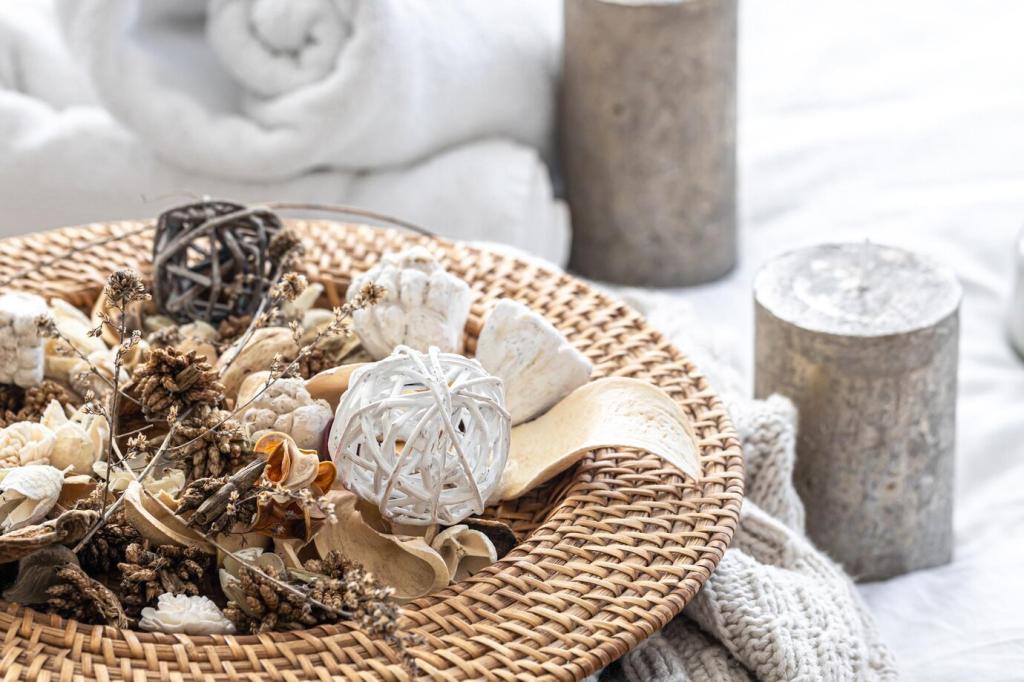Create Beauty Lightly: Low Impact Art Solutions
Chosen theme: Low Impact Art Solutions. Welcome to a creative space where every brushstroke, weld, stitch, and pixel leaves a gentler footprint. Here, artists experiment boldly while honoring resources, communities, and time. Join us, subscribe for fresh ideas, and start shaping art that treads softly yet speaks powerfully.
The Principles Behind Low Impact Art
Instead of measuring success by size, spectacle, or expense, low impact artists celebrate ingenuity, repairability, and lasting emotional resonance. Share your definition of success below and inspire others to rethink creative ambition.
The Principles Behind Low Impact Art
Working within material, energy, and budget limits sparks surprising breakthroughs. Constraints encourage modular forms, reversible joints, and pieces that evolve over time. Tell us which limit has helped your creativity most.
The Principles Behind Low Impact Art
A student collective built an exhibition with reclaimed doors, clamp lights, and handwritten labels; visitors stayed longer because the space felt honest and human. Subscribe for more field notes and practical templates.
Materials That Matter: Reclaimed, Recycled, Renewable
01
Reclaimed Woods, Metals, and Fabrics
Architectural salvage, offcuts, and decommissioned hardware stores hide treasures. Each scratch or patina carries a story. Drop a comment with your favorite local salvage spot to help the community map resources.
02
Plant-Based and Mineral Pigments
Casein paints, walnut inks, and earth pigments can replace synthetic options while offering nuanced tones. Test on small swatches first, and document recipes to build your studio’s low impact color library.
03
Local Sourcing Networks
Build relationships with theater shops, makerspaces, printers, and contractors to rescue usable materials. Propose a monthly exchange table, and invite readers in your area through our newsletter to keep supplies circulating.
Techniques To Lower Footprint Without Losing Magic
Zero-Waste Patterning and Layout
Plan cuts like a tailor: nest shapes, mirror components, and design pieces that accept offcut inlays. Share a photo of your layout maps so others can learn from your process and avoid unnecessary waste.
Modular, Flat-Pack, and Reconfigurable Forms
Create artworks that travel compactly and assemble without glue. Dowels, knock-down fittings, and standardized panels reduce transport emissions and invite playful recomposition in new spaces and contexts.
Non-Toxic Adhesives and Finishes
Choose water-based binders, plant oils, and low-VOC waxes. Ventilate well and test compatibility on scraps. If you have a reliable recipe for durable, safe finishes, post it to help fellow artists refine safer practices.
Daylight, Shade, and Ventilation
Position work tables near windows, use reflective surfaces to bounce light, and hang breathable curtains to temper glare. Good airflow improves health and reduces reliance on energy-intensive climate control systems.
Right-Sized Tools and Shared Equipment
Select tools that match actual needs rather than imagined extremes. Share seldom-used equipment through cooperatives to spread costs and energy use. Comment if you want to join or host a shared tool library.
Community Impact: Repair, Participation, Reciprocity
Visible mends—stitches, patches, and rivets—can carry pride rather than concealment. Host a monthly repair circle, document techniques, and encourage neighbors to bring materials that deserve a second, cherished life.
Invite residents to contribute found objects or stories. Participation shifts authorship from “mine” to “ours,” deepening care for the finished work and lowering material burdens through shared sourcing and collaborative assembly.
An artist gathered storm-fallen branches, wove a shelter, and hosted poetry readings inside. When the show ended, branches returned to compost, and friendships remained. Subscribe for the how-to guide and event checklist.

Materials Log and Provenance Notes
Keep a simple notebook or digital sheet listing sources, transport distance, and reuse potential. This habit reveals patterns and unlocks smarter decisions for future projects, exhibitions, and collaborative opportunities.
Durability, Disassembly, and Afterlife
Design for repair, swapping parts, or responsible composting. Ask: who will inherit this piece, and how can it be cared for? Share your answers to inspire more circular, respectful lifecycles and preservation.
Transparent Communication
Tell audiences how you sourced, built, and transported the work. Honest notes convert curiosity into support, and invite feedback that makes the next piece even lighter on resources and richer in meaning.
Exhibiting and Shipping With A Lighter Touch
Premiere nearby, tour regionally, and bundle venues to minimize travel. When shipping is essential, favor consolidated routes and lighter, protective, reusable crates that reduce emissions and material waste efficiently.
